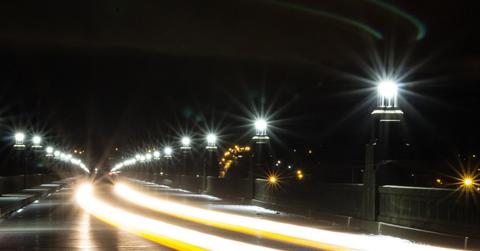Energy-Harvesting Tiles Turn Footsteps Into Electricity On Busy London Street
Bird Street in London's West End hasn't received a lot of attention, so the area was revived with a new, smart walkway that generates electricity just from people walking on it. It can also connect to mobile devices for interactive features.
Updated May 26 2019, 3:06 p.m. ET
We’ve seen solar panels added to sidewalks, and now streets that create renewable energy with just the simple footsteps of pedestrians. With solar panels not always being reliable, one company discovered how to generate power with traffic on these walkways. That's right: Technology is slowly beginning to power entire buildings as people walk down the street, without causing so much as a pause in people's path. Added bonus? It's even interactive.
Pavegen has redesigned Bird Street in London’s West End and turned it into an energy harvesting walkway. Instead of needing to absorb sunlight, people just walk on it to generate power. This is done by generators moving around under the pavement from each human step to create kinetic energy.
Researchers have experimented with similar concepts in the past. As we know, our bodies can generate a lot of energy when moving around and scientists have been trying to figure out how to turn that into something useful. Just last year, researchers at the University of Wisconsin-Madison have been developing a shoe with an ability to harvest energy. A video demonstration showed it powering a flashlight, and there have been hopes of it charging mobile devices or even powering remote areas.
Every footstep generates around five watts on Pavegen’s walkway in London, which is roughly 107 square feet. This will power on lights in the area and creates bird sounds, making the space both safer and more pleasant. There’s also a potential for it to power advertisements on billboards. Their website claims that these walkways are 90 percent efficient “compared to circa 50 percent for most commercial matrix displays.”
Other sustainable features in the area include Airlabs CleanAir benches and Airlite paint. It creates a healthier air bubble for those walking along the street by eliminating nitrogen dioxide. With these areas sadly being underused before renovation, the goal is to bring more people into the area. And introducing an interactive sidewalk that's good for the planet is certainly one way of doing that.
Perhaps the most unique thing about the smart street is the push for human interactivity. Bluetooth technology inside of the walkway connects to mobile apps so people can keep track of how much energy they’ve generated. By doing this, stores in the area can offer discounts on their products to promote more people walking in these areas, which is a great benefit to local and small businesses.
While the walkway is relatively small for a large number of people, the surface was designed with safety in mind. There is high slip resistance and it can function in any outdoor or indoor environment. No matter how heavy the traffic, the company claims that the tiles will be able to read all of the footsteps.
Pavegen has created over 150 projects around the world. Some examples include a 51-tile walkway at Hearthrow Airport in London and a large outdoor walkway in Washington, DC. The layout in the nation’s capital is the largest outdoor installation from the company and they estimate 10,000 people will walk over the 240-square foot pathway every day, pushing renewable energy back into the grid.
Of course, these walkways provide exciting, sustainable opportunities that help the planet by generating renewable power. They're also a tremendous way to promote people being outside and walking around districts that feature shopping, dining, and other events, making energy-harvesting tiles a good thing for not only the planet, but for communities, too.
